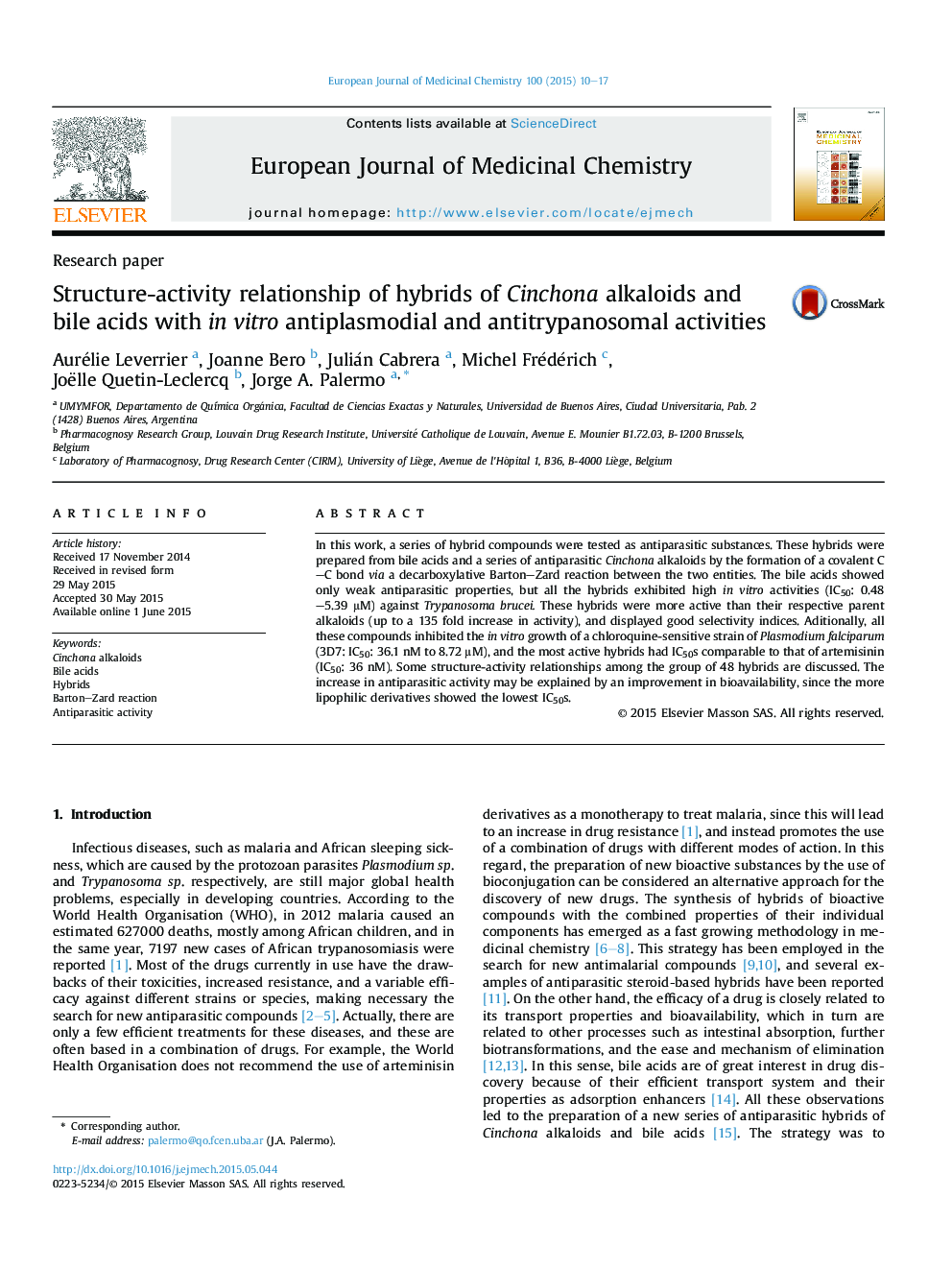| Article ID | Journal | Published Year | Pages | File Type |
|---|---|---|---|---|
| 1392069 | European Journal of Medicinal Chemistry | 2015 | 8 Pages |
•32 new hybrids of bile acids and Cinchona alkaloids were prepared.•The 32 new compounds were tested against Trypanosoma brucei and Plasmodium falciparum.•The structure-activity relationships of the complete library of 48 hybrids were analysed.•Some of the hybrids had activity comparable to artemisinin against P. falciparum.
In this work, a series of hybrid compounds were tested as antiparasitic substances. These hybrids were prepared from bile acids and a series of antiparasitic Cinchona alkaloids by the formation of a covalent C–C bond via a decarboxylative Barton–Zard reaction between the two entities. The bile acids showed only weak antiparasitic properties, but all the hybrids exhibited high in vitro activities (IC50: 0.48–5.39 μM) against Trypanosoma brucei. These hybrids were more active than their respective parent alkaloids (up to a 135 fold increase in activity), and displayed good selectivity indices. Aditionally, all these compounds inhibited the in vitro growth of a chloroquine-sensitive strain of Plasmodium falciparum (3D7: IC50: 36.1 nM to 8.72 μM), and the most active hybrids had IC50s comparable to that of artemisinin (IC50: 36 nM). Some structure-activity relationships among the group of 48 hybrids are discussed. The increase in antiparasitic activity may be explained by an improvement in bioavailability, since the more lipophilic derivatives showed the lowest IC50s.
Graphical abstractFigure optionsDownload full-size imageDownload as PowerPoint slide
